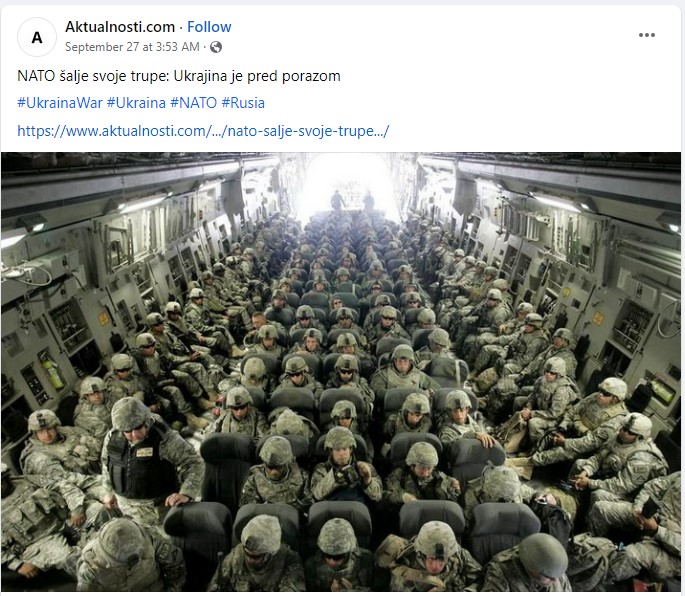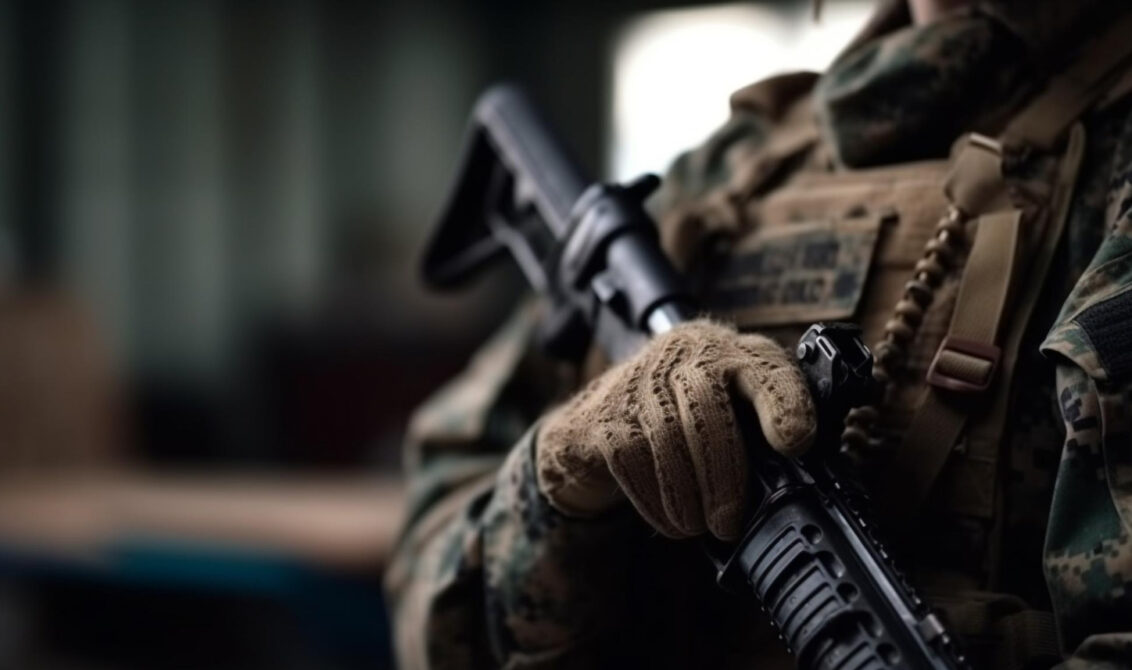Original article (in Montenegrin) was published on 05/10/2023; Author: Nina Đuranović
Amid the delicate Ukraine-Russia situation, significant attention has turned towards NATO and its potential role in de-escalating Russian aggression.
For months, the online space has been swarmed with various disinformation about the activities of the NATO alliance, which involve Ukraine in one way or another.
The assertion that “NATO is sending its troops, Ukraine is facing defeat” is the most recent one seen on online media outlets in Southeast Europe; it appears in the titles of articles on Srbin Info, Web tribune, Aktuelnosti.com.

Although the titles of articles on these portals give readers the impression that NATO is deploying troops into Ukraine, the subsequent article states that Senior Fellow Stephen Bryen of the Yorktown Institute’s Center for Security Policy merely considered this as a possibility.
“NATO may send its contingent to the territory of Ukraine due to serious failures of the Armed Forces of Ukraine in clashes with the Russian army,” Stephen Bryen, a senior researcher at the Centre for Security Policy at the Yorktown Institute, told “Asia Times”.
“Russia rightly believes that it opposes NATO, and Ukraine only acts as a kind of mediator. Unfortunately, now everything has reached the point where this very mediator fails and when the supporters of the conflict may decide to send their own troops to the front line”, he said.
NATO is not sending its troops to the territory of Ukraine, as confirmed by NATO press officer Matthias Eichenlaub in a statement given to PolitiFact.
Eichenlaub’s statement echoes NATO’s official stance on the war in Ukraine, as posted on NATO’s official website, explaining why NATO is not “sending troops or closing skies over Ukraine.”
“NATO’s actions are defensive, designed not to provoke conflict but to prevent it,” the site says.
“The alliance has a responsibility to ensure that this war does not escalate and spread beyond Ukraine, which would be even more devastating and dangerous. Enforcing a no-fly zone would bring NATO forces into direct conflict with Russia. This would significantly escalate the war and lead to more human suffering and destruction for all countries involved.”
We rate the posts by disputed web portals as Clickbait due to the fact that the title differs from the content of the very article, with an additional label of Fake News, as it is evident that the claim about the deployment of NATO troops on the territory of Ukraine is a false one.
The “Clickbait” rating is assigned to a media report whose title has no backing in the very contents of the article. Such articles and features aim to capture the attention of their readers with a sensational headline, promising content that is not really there and are mostly created for financial interest, i.e. to increase readership.
The “Fake News” label is assigned to an original media report (entirely produced by the media that originally published it) that contains factually incorrect claims or information. The contents labelled as fake news are those identified with full certainty as having been created and disseminated with the intention of disinforming the public and presenting an otherwise completely false claim as a fact.



